Other pieces
Here you will find information about other Norwegian parts like baseplates, trees, traffic signs and etc.
Windows and doors -
Here we take a look at the 4 window and door variations which were available in Norway.
Flat ABB windows and doors
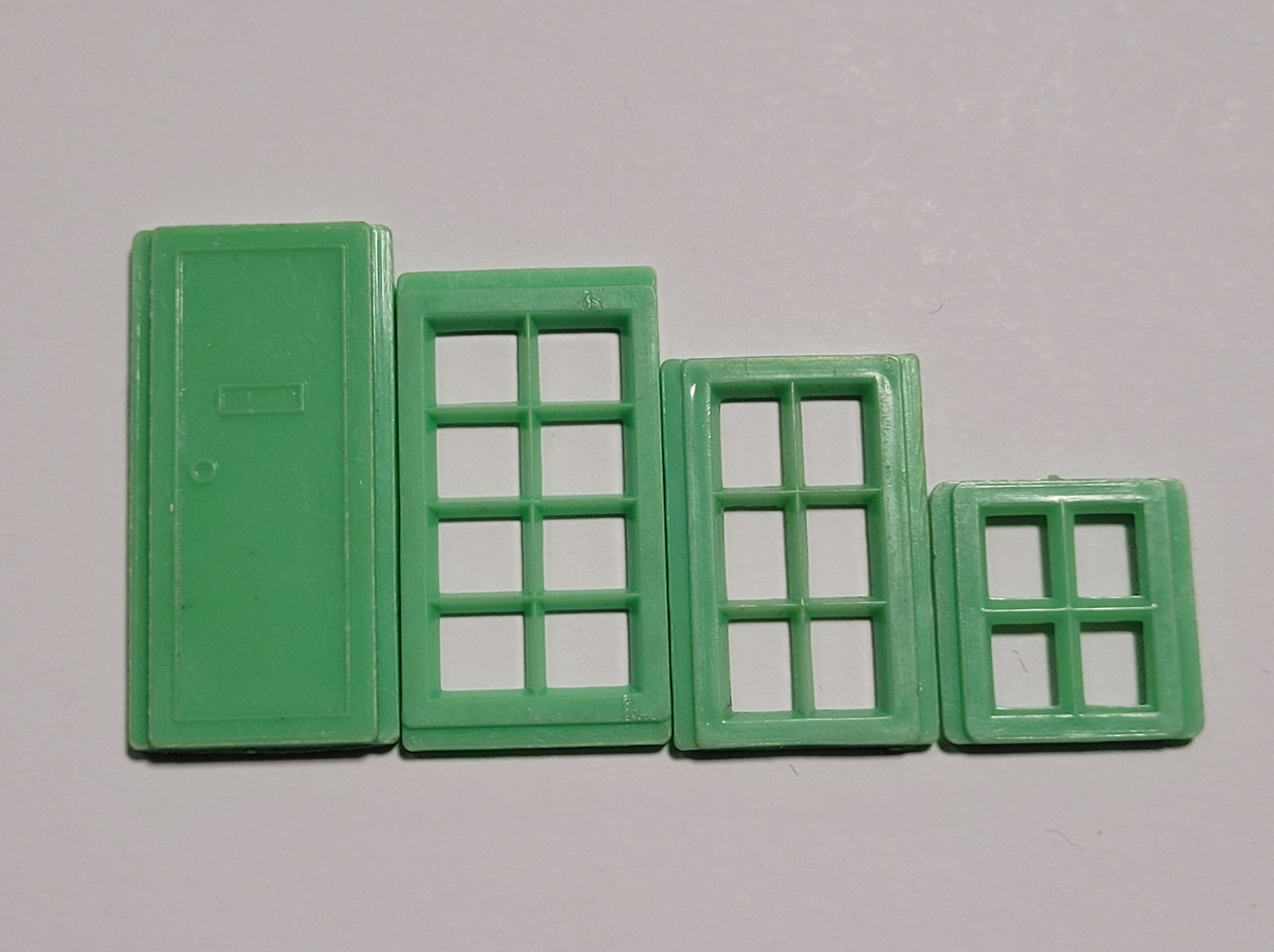
This was the first type of windows and doors sent to Norway with the ABB bricks mould in 1953. They are completely flat made to slide in between the slots in the bricks. They came in the sizes 2x2, 2x3 and 2x4 window, and a 2x4 door.
All the colours for the ABB bricks were also available for the windows and doors. With a few extras. One being pink which has not yet been discovered for the ABB bricks, or any other Norwegian slotted bricks. Also common colours like red, green, yellow, etc. which were not used for the ABB bricks.
The flat windows and doors were produced for a long time which could explain them being available in so many colours. Possibly produced until 1955/56.
Tall windows and doors with glass
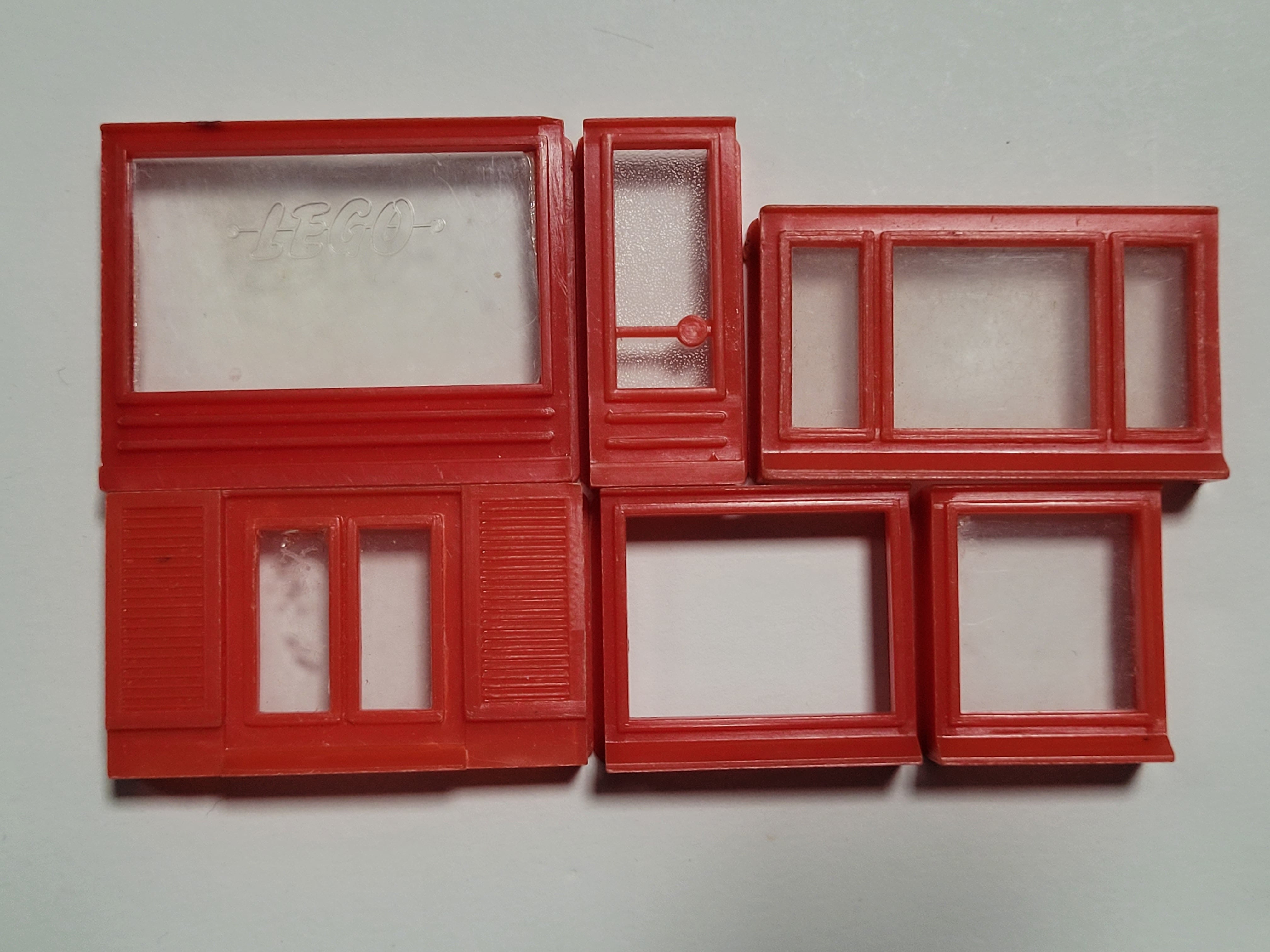
These are without a doubt the nicest windows and doors LEGO made for decades to come. They were released towards the end of 1954. The windows came in the sizes 1x3x3, 1x4x3, 1x6x3, 1x6x3 with shutters, 1x6x4 with LEGO embossed in the glass. The door was 1x2x4. They have a slight extended lip on each vertical side which fit between the slots in the bricks, and an open top.
They came in the common colours red, white and a slightly rarer dark blue. As well as green and yellow which are rare and unique colours for Norway. The yellow were also made for some sets sent to Sweden, making green the rarest.
Short windows and doors without glass
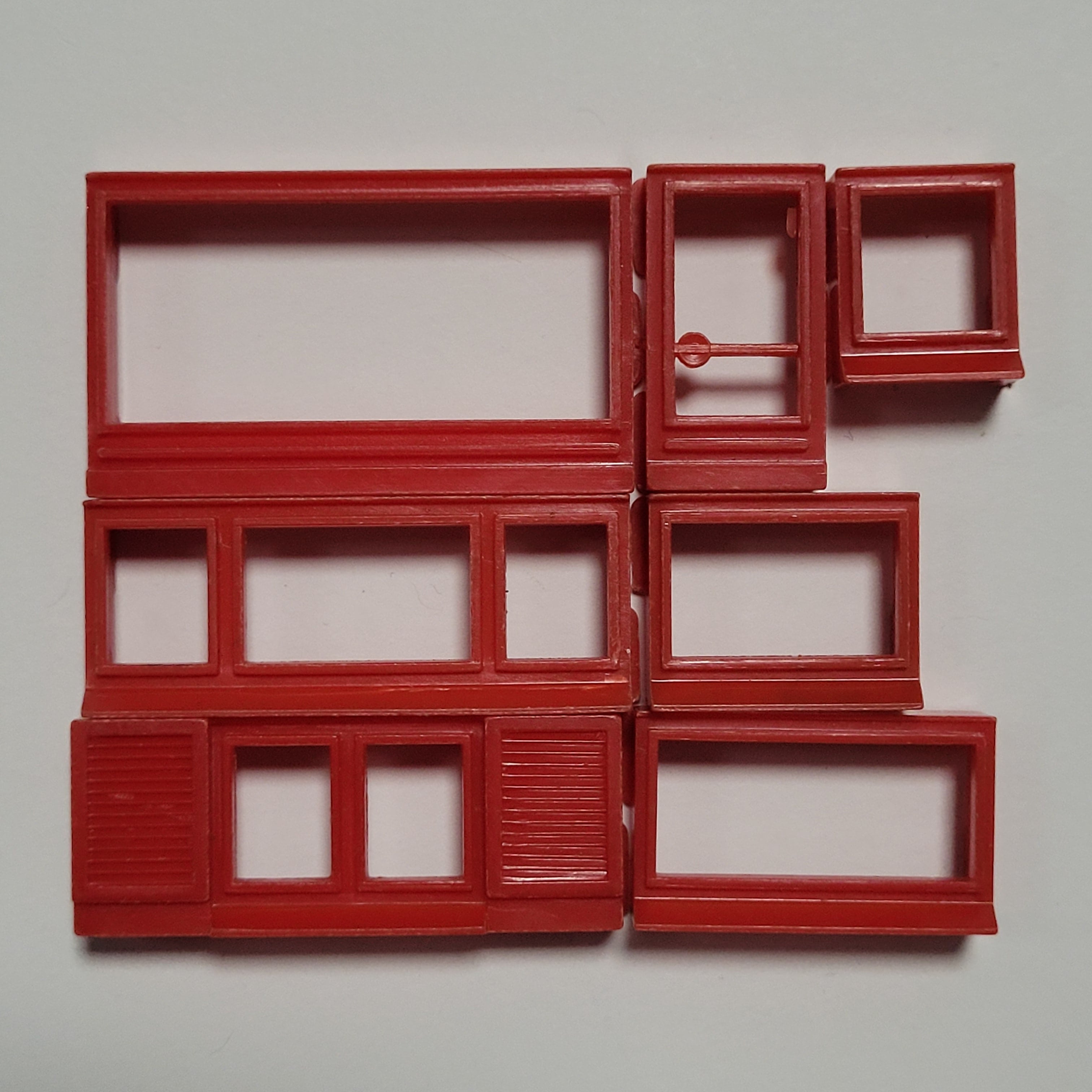
These were released with the introduction of system i leg/lek in 1955. The windows came in the sizes 1x2x2, 1x3x2, 1x4x2, 1x6x2, 1x6x2 with shutters, and 1x6x3. The door was 1x2x3. They have short extended lip(s) on each vertical side for the slotted bricks, and a closed top.
In Norway they were only available in red. In Denmark they are rare to find in white and dark blue as well.
Short windows and doors with glass and studs
With the introduction of the hollow bricks in 1956 these windows and doors were released. They had studs with LEGO logo on top, no lip on the sides for slotted bricks, small "tabs" on the bottom for increased stability on bricks and glass. Other than that they followed the same sizes and style of the previous short windows and doors without glass.
Other parts -
Here we take a look at parts and items like baseplates, trees, letter bricks and etc.
Baseplates
Two main baseplate types were available in Norway. This was the thin ABB baseplates and the thick 700e "blockletter" baseplates.
Thin ABB baseplates
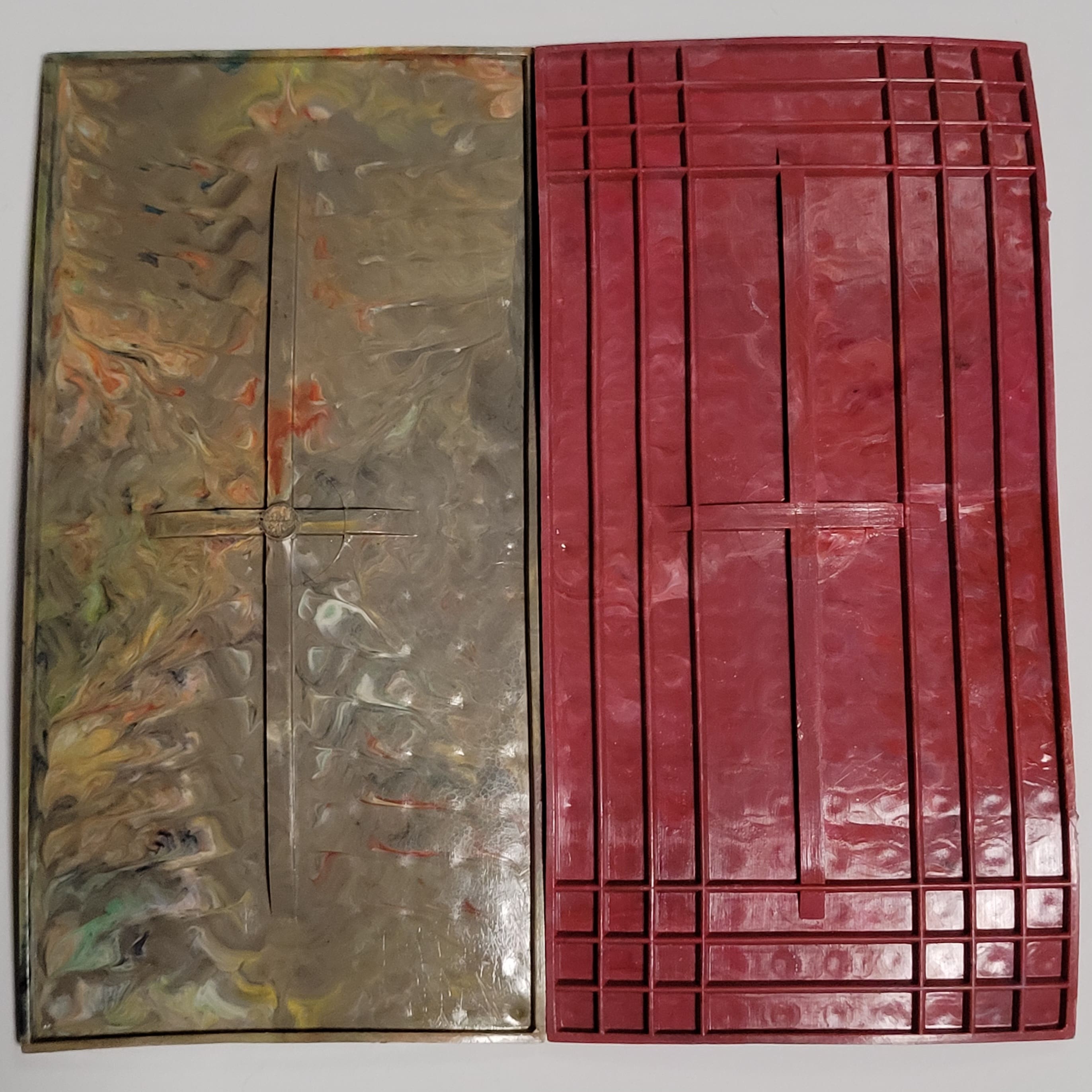
These baseplates were the very first in Norway, released in 1953. They were very thin and after a short amount of time they started warping badly, making them almost useless. The exact same problem they had in Denmark at the time. Luckily the more sturdier and bigger 700e baseplates were not far behind. While waiting for the 700e baseplate mould to arrive in Norway they did attempt adding extra supports under the thin baseplates. Unfortuneatly with little success. The last solution was screwing the baseplates to small wooden boards, this prevented the baseplates from warping out of shape. So far we have found the thin baseplates in the following colours in Norway:
Light red
Dark red (slightly marbled)
Light yellow
Dark green (slightly marbled)
White (slightly marbled)
Marbled (multiple colour mixes)
It is a bit curious why they did not try a different plastic type for the baseplates, as they had different ones available at the time, used for both some bricks and all the Chevrolets. Maybe they did not bother experimenting much as the 700e baseplate was right around the corner.
Thick 700e baseplates
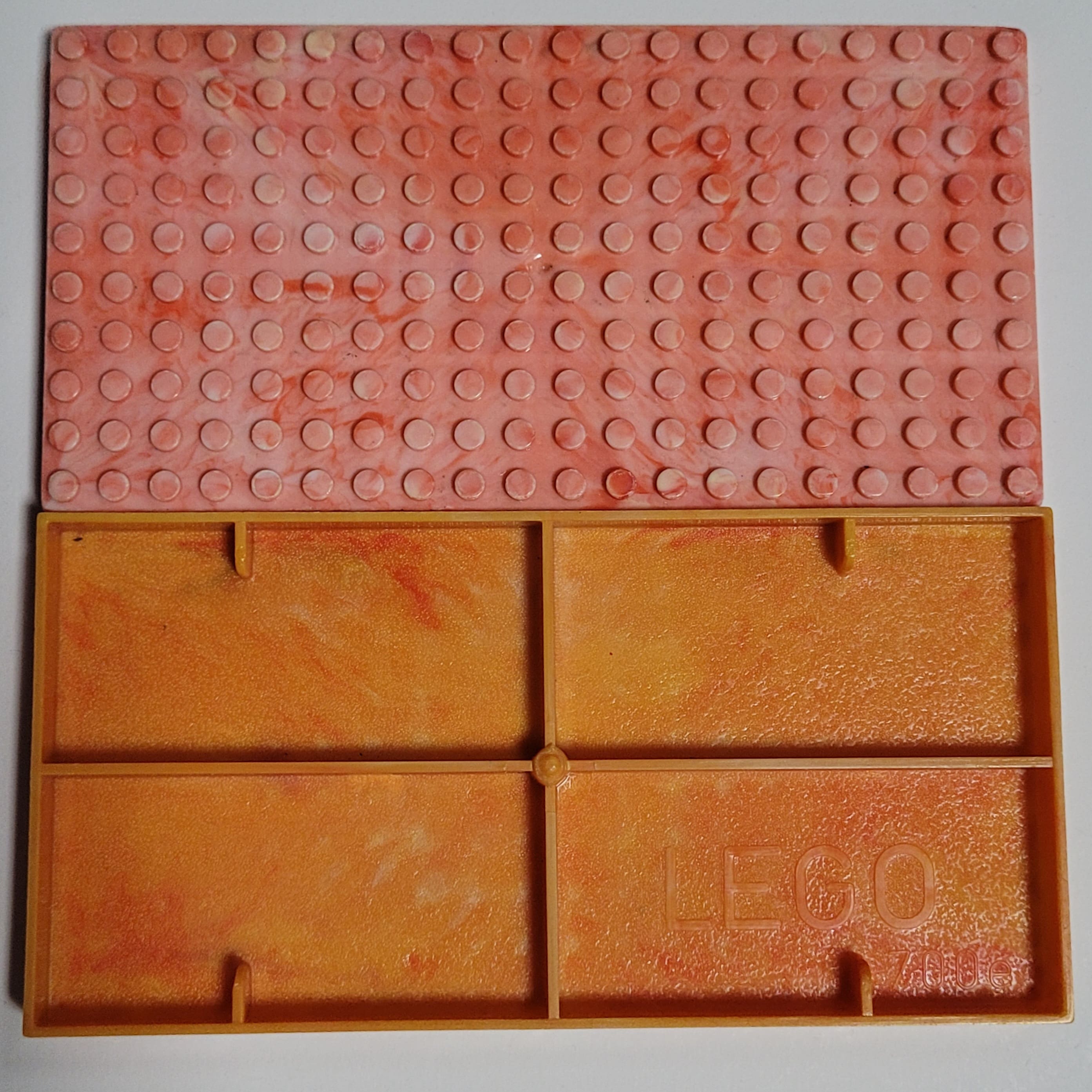
Released mid-1954 this was a greatly awaited replacemenet for the thin ABB baseplates. It was the same thickness as the bricks, and hollow underneath, so it now had more uses for building. The plastic was also changed to a much sturdier type similar to the LEGO Chevrolets, so warping was no longer a problem.
Unique for Norway was that some of these baseplates were marbled on purpose. This was most likely done right around the change from the thin ABB baseplates. Except for that there were no special colours for these baseplates in Norway. Just the common red, yellow, green, blue and white. The only exception may be the "egg-white" colour, which is a colour similar to tan.
Only in Norway the 700e baseplates were sold as "double" and "triple", glued together two or three on the long side.
Trees
There were three main tree types in Norway, all three based on the colour and plastic used to make them. They were only available in set 1248 as part of the System i Lek starting in 1955.
Type 1 - Brittle green trees
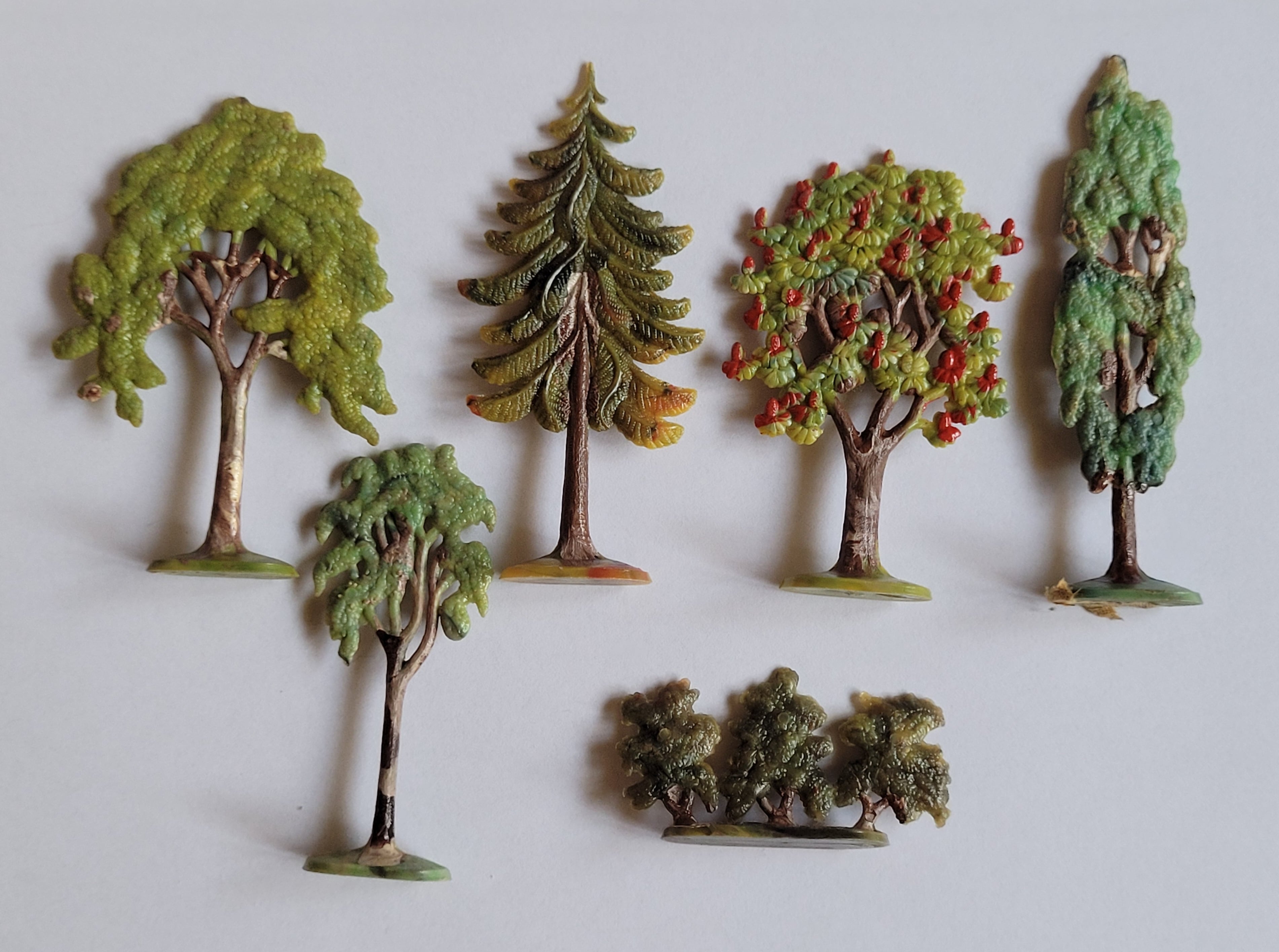
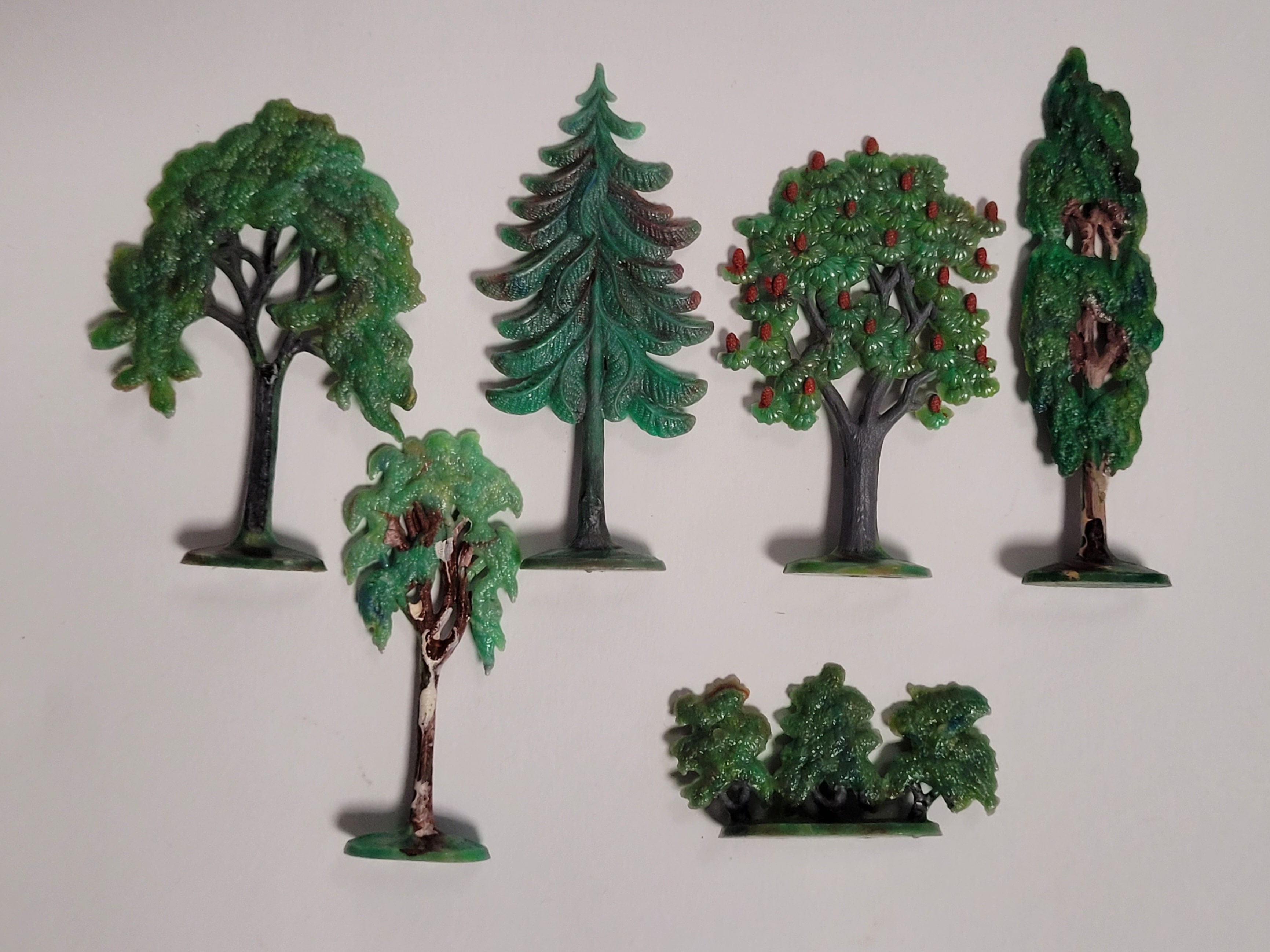
This is the main Norwegian tree type. Made using a hard shiny plastic, with a glass-like sound when dropped, hence the "brittle" name. They were marbled with multiple colours, mainly green, and only the trunk of the tree was painted. Leaving the leaves of the tree unpainted, showing the nice marbled colours. Due to them being marbled there is some colour variation, some appear darker, and some appear lighter in colour. Same with the painted tree trunks. some are light gray, others dark brown or a mix of the two.
Type 2 - Brittle green trees
Type 2 is very much the same as type 1, only exception is that they are not marbled. So they have this slightly transparent light green colour only with the trunk painted.
"Swedish" trees
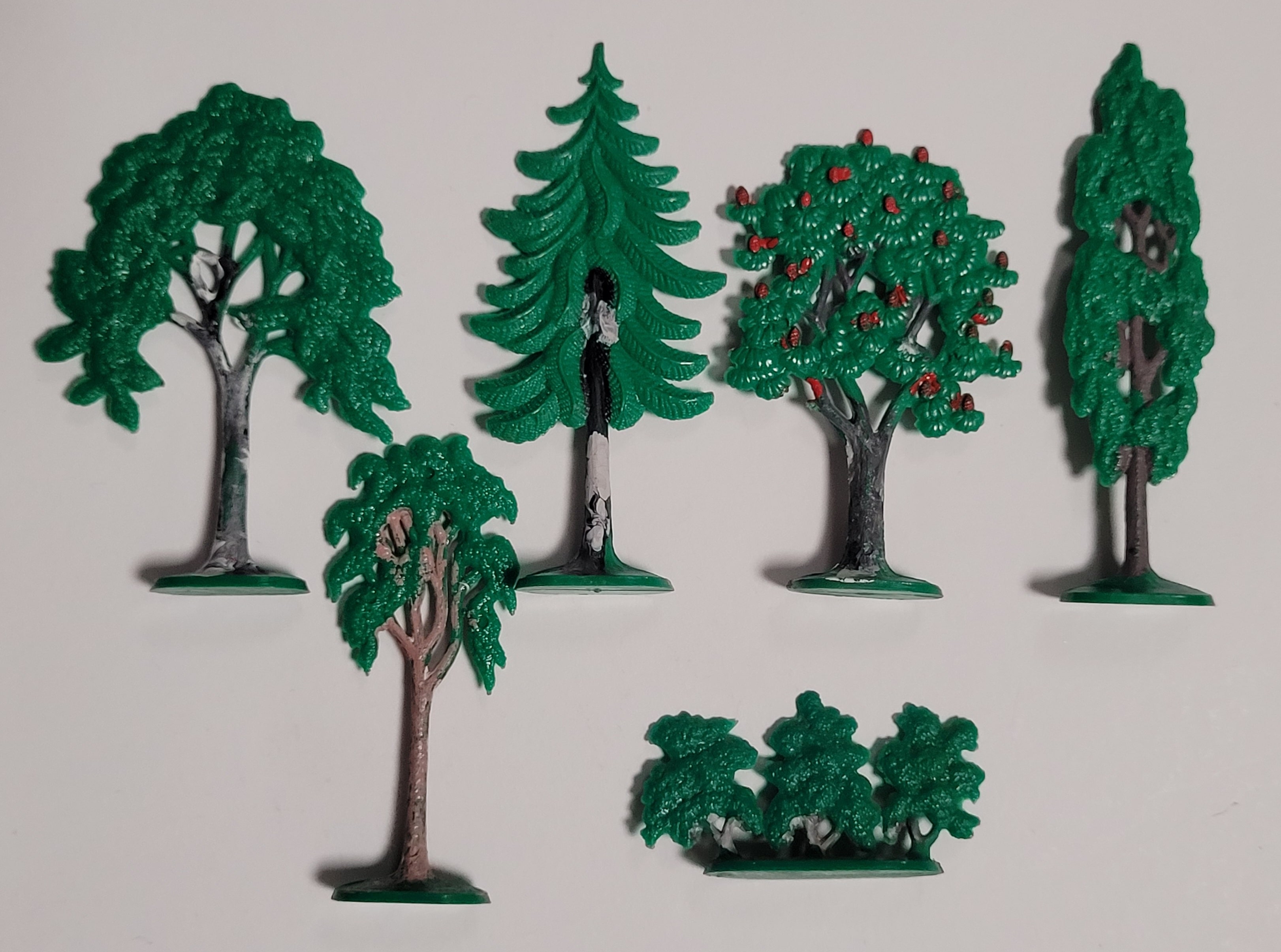
This variant is known as "Swedish trees" because they were most commonly in the sets Norway sent across the border for the Swedish market. They do however also appear in some sets in Norway as well.
They are made using a softer green plastic, and not marbled.
Policemen
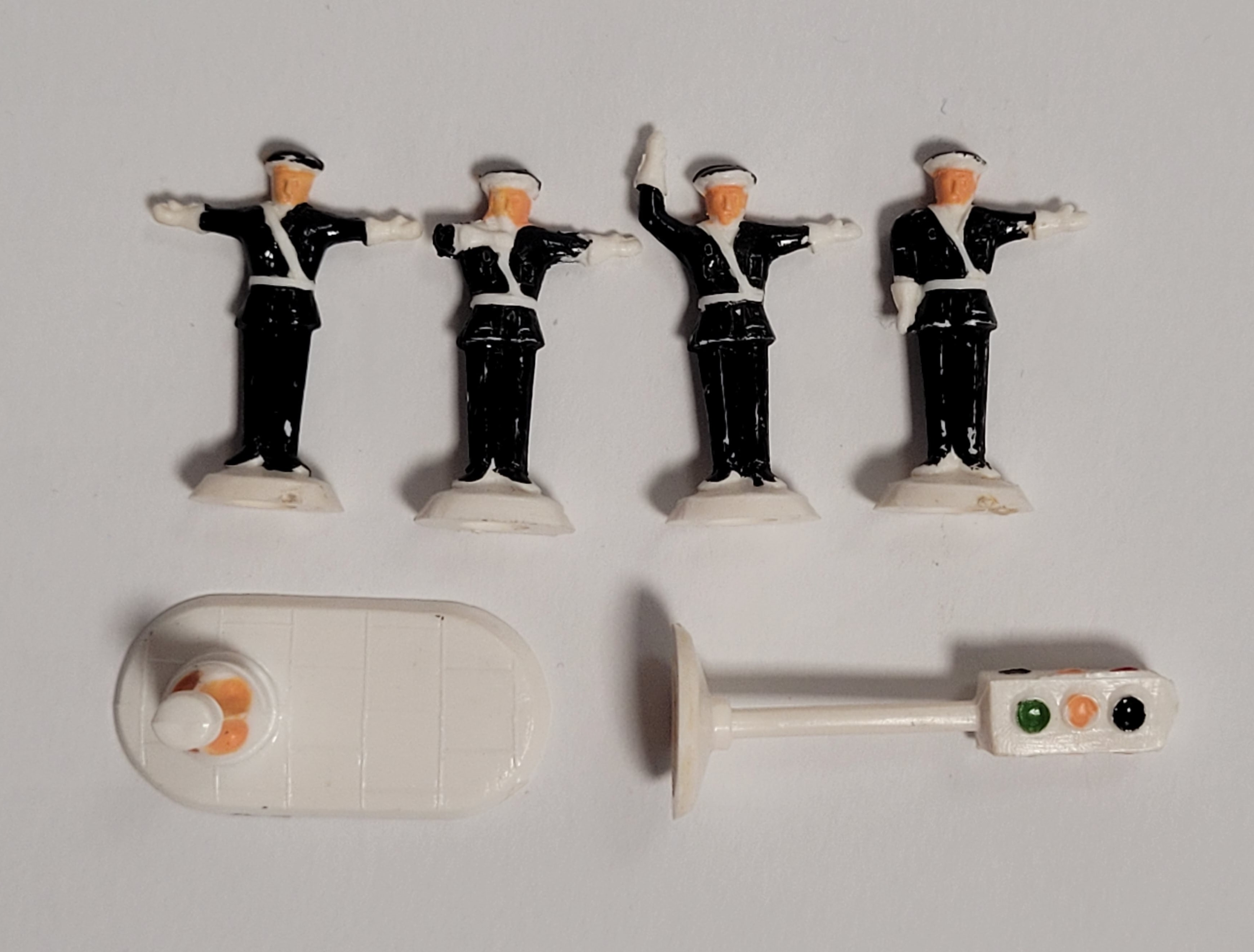
In Norway the policemen and other parts included in the 1271 set were made using white plastic and then painted. The paint colour used for the policemen faces is also often a bit different from Denmark.
Street lights
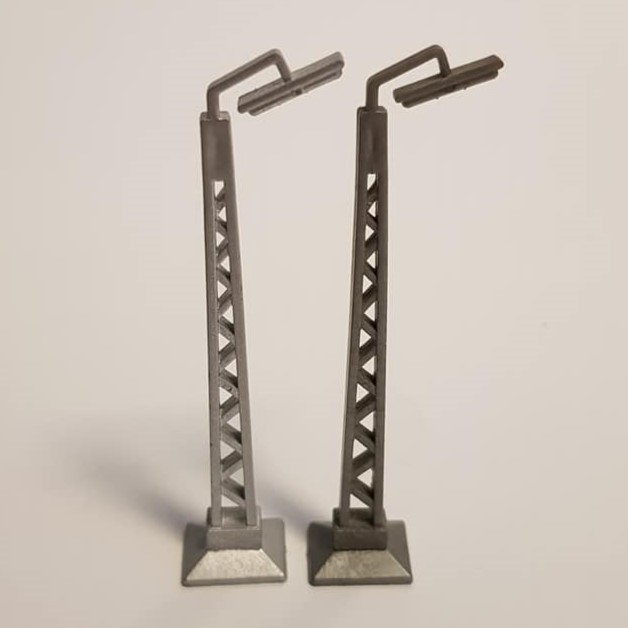
Instead of being painted silver the street lights in Norway were made using dark silver plastic. The same colour used for the small motorcycles and ladders for the system firetrucks. The dark silver colour is usually quite noticeably different compared to those of other countries. On the picture the Norwegian street light can be seen on the right.
Traffic signs
The Norwegian traffic signs are some of the most distinctively different from other countries. They are the only ones to have red bases. 16 different traffic signs exist, or 17 if you count the arrow pointing left and right. The first versions of the traffic signs had decals, towards the end this was changed to an embossed/printed variant which is the hardest to find.
Letter bricks
Only in Norway you found letter bricks in other colours than white, and even with gold letters! The colours were red and blue, blue being the rarest of the two. The most common colour in Norway is still white bricks with blue/black print.
Named beams / Text bricks
Another special variant for Norway was the named beams. They started out only being available as water decals. The water decals could be bought loose to place on any bricks you want, or pre-applied in the 1224 set. Possibly around 1957/59 the decals were changed to the more common embossed/printed variant. Still there were a few unique name and colour variants only available in Norway. They were the following:
Kolonial (Red) - "Food shop"
Baker (Thick gold print)
Slakter (black) - "Butcher"
VW garasje (blue) - "VW garage"
Hotell (blue)
The "Hotell" brick was also available in Sweden.